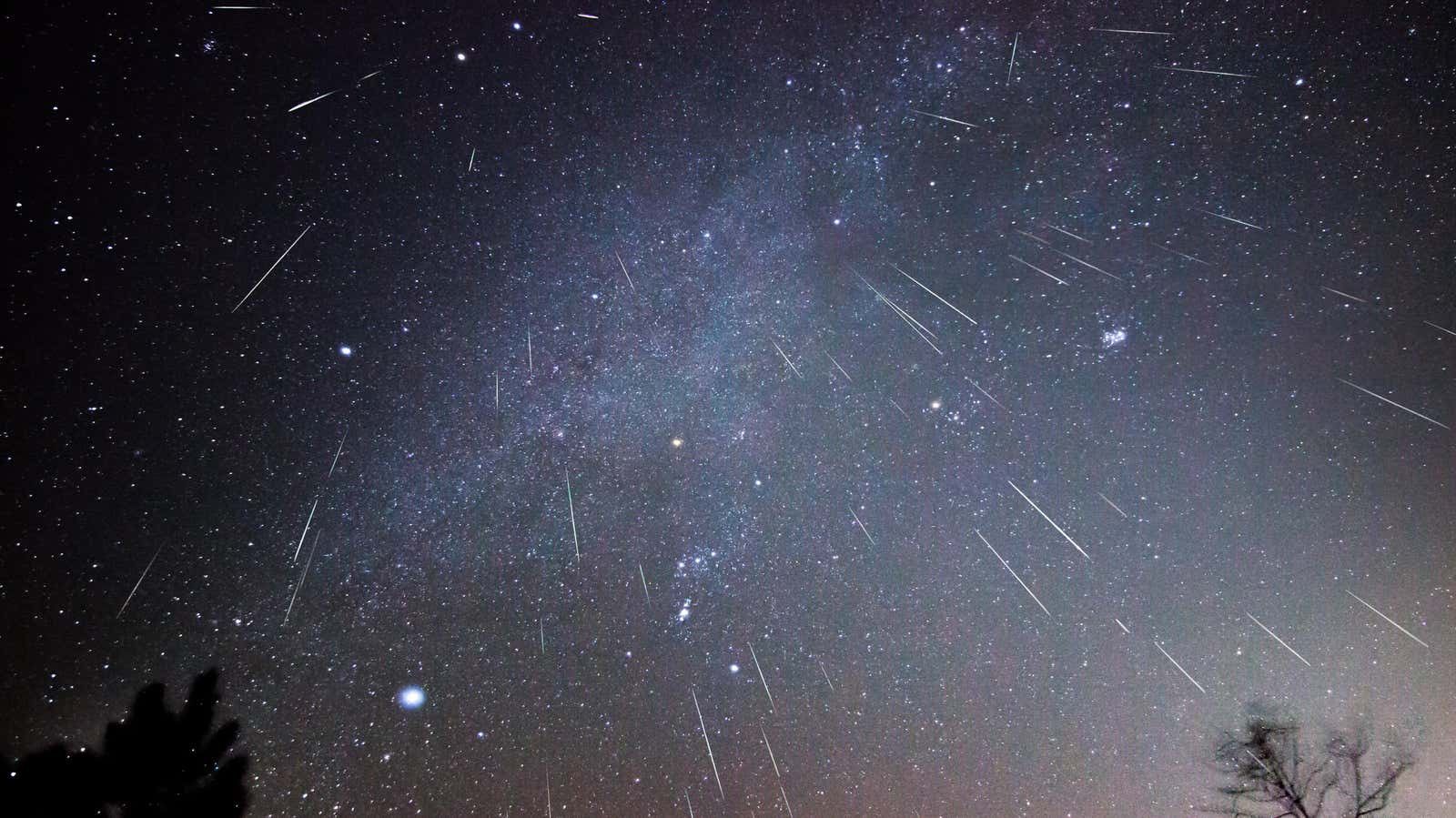Geminid Meteor Shower About to Peak

This Wednesday and Thursday, December 14 and 15 marks the peak of the annual Geminid meteor shower, the main event of the year for meteor lovers. You should be able to spot a lot of shooting stars at a very low cost while looking into the night sky.
Geminid meteors come bright, frequent, and fast. Were it not for the interference of moonlight, you might see around 120 meteors an hour when the shower peaks, but a relatively bright moon this year will make some shooting stars invisible. It’s hard to predict exactly how strong a meteor shower will be, but you’ll probably spot a bunch of meteors if you’re patient.
The best way to see Geminid meteors
Many Gemini meteors will appear to come from the constellation Gemini, but they will be all over the sky, so it is best to go to a place that is as dark and open as possible, look vaguely towards Gemini and try to see. as much of the night sky as possible. Try to arrive early to give your eyes about 20 minutes to acclimate to the darkness.
The shower’s radiant point reaches its highest point in the sky at about 2am in the northern hemisphere, so that’s the optimum time to watch, but it’s really academic – around midnight, you’ll also see a lot of shooting stars.
You won’t need a telescope or binoculars to see them – both will actually narrow your field of vision – but it’s a good idea to bring a friend with you so you can each look at different parts of the sky and yell “meteor!” whenever you see one. (As an added bonus, you can have a heart to heart talk about your dreams and ambitions.)
The Mystery of the Geminid Meteorite
The Geminids, first recorded in 1833, are an astronomical mystery. Unlike most other meteors, Geminid shooting stars do not emerge from a comet’s tail. They came from an asteroid – 3200 Phaeton, a stone ball, not an ice one. We’re still not sure how rocks can leave a trail of particles that burn up in our atmosphere to form meteors, but the leading theory is sodium.
We know that Geminid meteors are not made of sodium because they burn white, while sodium meteors are orange. But scientists believe that the sodium inside the asteroid evaporates as it approaches the Sun and heats up, and then sizzles to the surface, ejecting rocks and dust that eventually collide with our atmosphere and create the shooting stars we see from Earth. .
We should learn more about 3200 Phaethon in 2028 when the Japanese spacecraft DESTINY+ (a space technology demonstration and experiment for interplanetary travel with Phaethon Flyby and Dust Science) will fly by the asteroid. The mission plan is to map Phaeton’s surface with a telescopic camera and a dust analyzer to understand the dust release mechanisms.